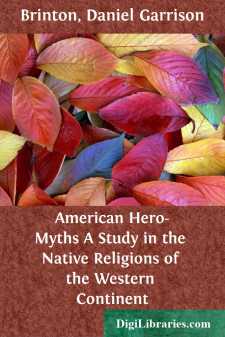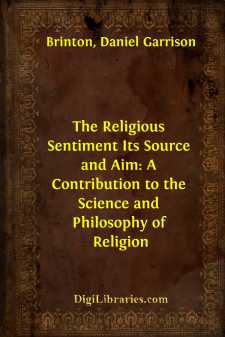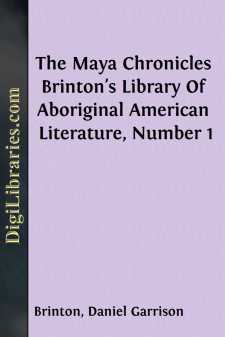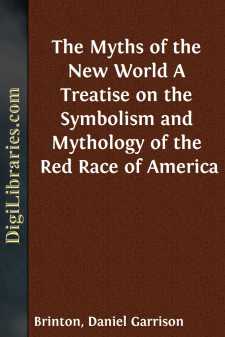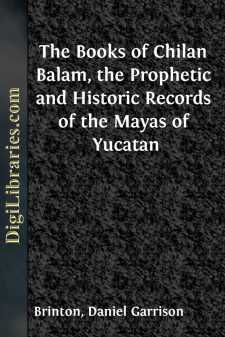Categories
- Antiques & Collectibles 13
- Architecture 36
- Art 48
- Bibles 22
- Biography & Autobiography 813
- Body, Mind & Spirit 142
- Business & Economics 28
- Children's Books 17
- Children's Fiction 14
- Computers 4
- Cooking 94
- Crafts & Hobbies 4
- Drama 346
- Education 46
- Family & Relationships 57
- Fiction 11829
- Games 19
- Gardening 17
- Health & Fitness 34
- History 1377
- House & Home 1
- Humor 147
- Juvenile Fiction 1873
- Juvenile Nonfiction 202
- Language Arts & Disciplines 88
- Law 16
- Literary Collections 686
- Literary Criticism 179
- Mathematics 13
- Medical 41
- Music 40
- Nature 179
- Non-Classifiable 1768
- Performing Arts 7
- Periodicals 1453
- Philosophy 64
- Photography 2
- Poetry 896
- Political Science 203
- Psychology 42
- Reference 154
- Religion 513
- Science 126
- Self-Help 84
- Social Science 81
- Sports & Recreation 34
- Study Aids 3
- Technology & Engineering 59
- Transportation 23
- Travel 463
- True Crime 29
A Record of Study in Aboriginal American Languages
Description:
Excerpt
General Articles and Works.
1. The Philosophic Grammar of American Languages as set forth by Wilhelm von Humboldt; with the translation of an unpublished Memoir by him on the American Verb. pp. 51. In Proceedings of the American Philosophical Society, 1885.
2. On Polysynthesis and Incorporation as characteristics of American Languages. pp. 41. In Proceedings of the American Philosophical Society, 1885.
3. Characteristics of American Languages. American Antiquarian, January, 1894.
4. On certain morphologic traits in American Languages. American Antiquarian, October, 1894.
5. On various supposed relations between the American and Asiatic Races. Memoirs of the International Congress of Anthropology, 1893.
6. The Present Status of American Linguistics. Memoirs of the International Congress of Anthropology, 1893.
7. American Languages and why we should Study them. An address delivered before the Pennsylvania Historical Society. pp. 23. In Pennsylvania Magazine of History and Biography, 1885.
8. The Rate of Change in American Languages. In Science, Vol. X., 1887.
9. Traits of Primitive Speech, illustrated from American languages. In Proceedings of the American Association for the Advancement of Science, August, 1888.
10. The Language of Palæolithic Man. pp. 14. In Proceedings of the American Philosophical Society, October, 1888.
11. The American Race: A Linguistic Classification and Ethnographic Description of the Native Tribes of North and South America. pp. 392. New York, 1891.
12. The Standard Dictionary (Indian Words in). New York, 1894.
13. Aboriginal American Authors and their Productions, especially those in the Native Languages. pp. 63. Philadelphia, 1883.
14. American Aboriginal Poetry. pp. 21. In Proceedings of the Numismatic and Antiquarian Society of Philadelphia, 1883.
15. The Conception of Love in some American Languages. pp. 18. In Proceedings of the American Philosophical Society, November, 1886.
The earlier numbers, (
,) in the above list are occupied with the inquiry whether the native American languages, as a group, have peculiar morphological traits, which justify their classification as one of the great divisions of human speech. In thisquestion, I have been a disciple of Wilhelm von Humboldt and Professor H. Steinthal, and have argued that the phenomenon of Incorporation, in some of its forms, is markedly present in the vast majority, if not in all, American tongues. That which has been called “polysynthesis” is one of these forms. This is nothing more than a familiar, nigh universal, grammatic process carried to an extreme degree. It is thedvandaof the Sanscrit grammarians, an excellent study of which has recently appeared from the pen of Dr. H. C. Müller.In its higher forms Incorporation subordinates the nominal concepts of the phrase to those of time and relation, which are essentially verbal, and this often where the true verbal concept, that of abstract action, is lacking, and the verb itself is in reality a noun in the possessive relation.Even extremely simple American languages, such as the Zoque, display the tendency to energetic synthesis; while many of them carry the incorporative quality to such a degree that the sentence becomes one word, a good example of which is the Micmac. Some American and French writers have misunderstood the nature of this trait, and have denied it; but the student who acquaints himself thoroughly with the authors above mentioned, will not be misled.
The MS....



